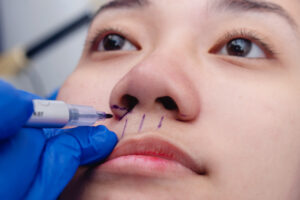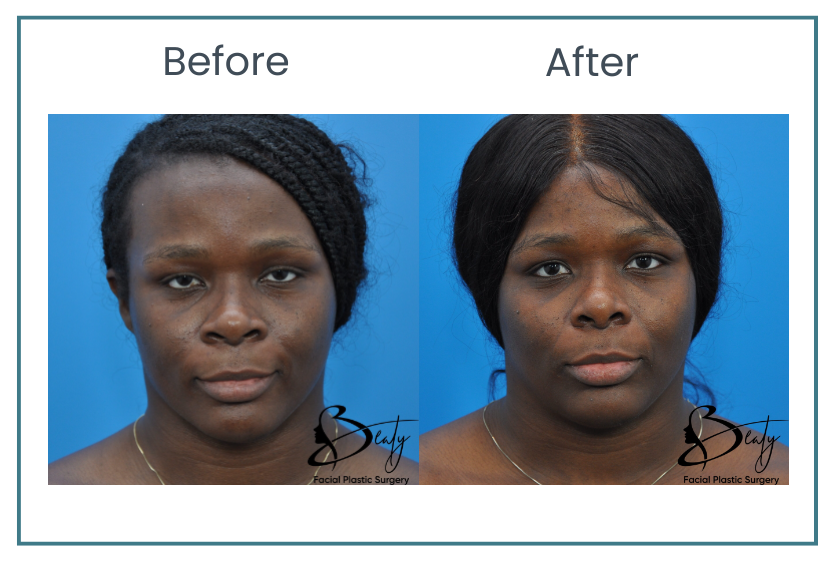The nose is a defining feature of the face, and patients often seek transformative nose reshaping procedures to enhance their overall facial harmony. One component of the nose that is receiving increased attention is the nasal base, or nostrils. A traditional rhinoplasty is focused on the underlying bone and cartilage structures of the nose, but the outer walls of the nostrils—known as the ala—are composed of skin and soft tissue. As such, patients wishing to address overly wide or flared nostrils may seek an alarplasty either as a standalone procedure or in conjunction with their rhinoplasty to achieve more comprehensive results.

Atlanta and Alpharetta facial plastic surgeon Dr. Mark Beaty has more than twenty years of experience performing nasal surgeries, and he possesses a keen eye for facial aesthetics. During a consultation, he can help determine whether alarplasty is right for you.
What Is Alarplasty?
Alarplasty is a cosmetic surgical procedure that alters the size and shape of the nostrils. It focuses on the alar base, the area where the nostrils meet the face, to create a more balanced nasal appearance. Commonly performed to reduce nostril width or flare, alarplasty is often sought for aesthetic reasons or to complement more comprehensive rhinoplasty procedures. It may also be performed to augment the results of an unsatisfactory nose surgery, either as a standalone procedure or as part of a revision rhinoplasty.
How Is the Alarplasty Procedure Performed?
 Depending on the goals of the patient, alarplasty generally involves making small incisions inside the nose, along the alar crease, or in the natural crease below the nose. From there, Dr. Beaty can remove excess nostril tissue and/or reposition the alar walls. Alarplasty is commonly performed to reduce nostril width, decrease nostril flare, and/or create more symmetrical nostrils. Dr. Beaty meticulously sutures the incisions closed, ensuring the most discreet scars possible.
Depending on the goals of the patient, alarplasty generally involves making small incisions inside the nose, along the alar crease, or in the natural crease below the nose. From there, Dr. Beaty can remove excess nostril tissue and/or reposition the alar walls. Alarplasty is commonly performed to reduce nostril width, decrease nostril flare, and/or create more symmetrical nostrils. Dr. Beaty meticulously sutures the incisions closed, ensuring the most discreet scars possible.
If it is performed as a standalone procedure, alarplasty can oftentimes be completed in our office using local anesthesia. For a full rhinoplasty, general anesthesia is typically indicated.
Alarplasty Before & After Photos


*Individual results may vary!
What Is Alarplasty Recovery Like?
The recovery process after alarplasty depends on whether it is performed as a standalone procedure or as part of a more comprehensive rhinoplasty procedure. When performed on its own, alarplasty recovery is usually fairly quick, with most patients able to resume normal activities within around 7-10 days. The most common side effects are swelling and bruising, both of which should resolve over time.
If alarplasty is performed in conjunction with rhinoplasty, then the typical rhinoplasty recovery timeline applies.
Interested in learning more about surgical nostril reduction? Contact Beaty Facial Plastic Surgery today to schedule a consultation.






